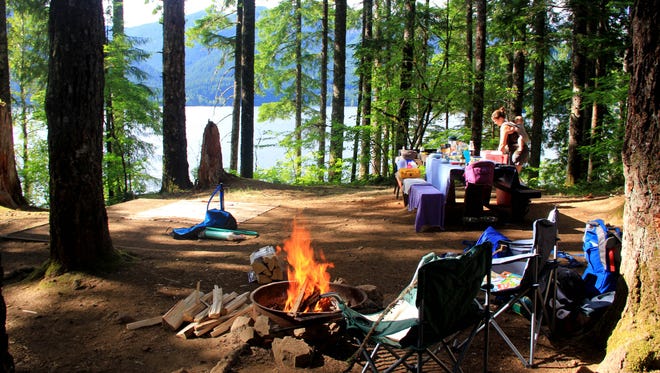Flip-flop wearing hikers, wildfire danger could cause chaos during solar eclipse

Whoever scheduled the solar eclipse for Aug. 21 should be fired.
That’s the joke, at least, among land managers bracing for the tidal wave of humanity expected to descend on the nation’s public lands for the once-in-a-lifetime event.
Millions of visitors are projected to swarm the forests and mountains in states within the eclipse path of totality, right at the time wildfire danger and summer tourism is reaching its apex.
“It literally could not be happening at a worse time,” said Jean Nelson-Dean, public information officer for Deschutes National Forest in Oregon, the first state that will get eclipse views.
“It’s the peak of fire season. Our emergency responders are going to be spread thin. And the forest is going to be filled with a lot of people who don’t camp very often and might have little experience with the outdoors,” Nelson-Dean said.

The nightmare scenario is a wildfire breaking out while roads are clogged with cars and campgrounds filled with people.
But there's also concern about thousands of people fighting for just a few open campsites, along with flip-flop wearing hikers attempting to climb dangerous mountains.
“The thing we’re worried about is people waking up the morning of the eclipse, heading out and expecting to find a campsite or beautiful place to view it,” said Cody Norris, public information officer for Mark Twain National Forest in Missouri.
“Don’t show up at the last minute," Norris said. "And once you’re here, be prepared to get stuck somewhere for a long time.”
More solar eclipse coverage:
How fast is the solar eclipse? And 32 other questions, answered
Solar eclipse map: Where to see the total eclipse
Virtually all public campsites that can be reserved within the eclipse path were snapped up long ago.
But in places such as Illinois’ Shawnee National Forest, all campgrounds are first-come, first-served. That could mean competition for sites given the number of people expected, forest spokeswoman Sue Hirsch said.
"We're expecting high numbers and I wouldn't be surprised if people got here pretty early," she said. "But it's hard to gauge how many people will actually show up, and we've opened up three other areas so we have room for everybody."
Those without an official campsite can still spend the night on public lands. It's known as “dispersed camping” and is typically allowed throughout land managed by the Forest Service and Bureau of Land Management, typically on the sides of roads or by hiking to a specific spot.
“If you’re planning to do it, we’re asking people to think about leaving no trace and picking places that are already impacted,” said Grady McMahan, district ranger for Willamette National Forest in Oregon. “Don’t put a tent down or try to camp on fresh vegetation.”
It’s not just about where people spend the night, but also where they plan to view the eclipse.
More solar eclipse coverage:
Here's the only way to get an unobstructed view of the eclipse
Why are total solar eclipses so rare?
When is the next solar eclipse?
McMahan said his office has fielded numerous calls from people planning to climb Mount Jefferson, Oregon’s second-tallest mountain, to view the eclipse.
The problem: the 10,495-foot mountain is a dangerous and technical climb that’s taken multiple lives in recent years.
“A lot of people who’ve called clearly don’t know what they’re getting into,” McMahan said. “We’re planning to have extra rangers near our major peaks to kind of talk to people and make sure they have the equipment necessary to make a summit attempt.”